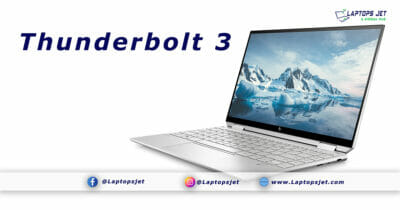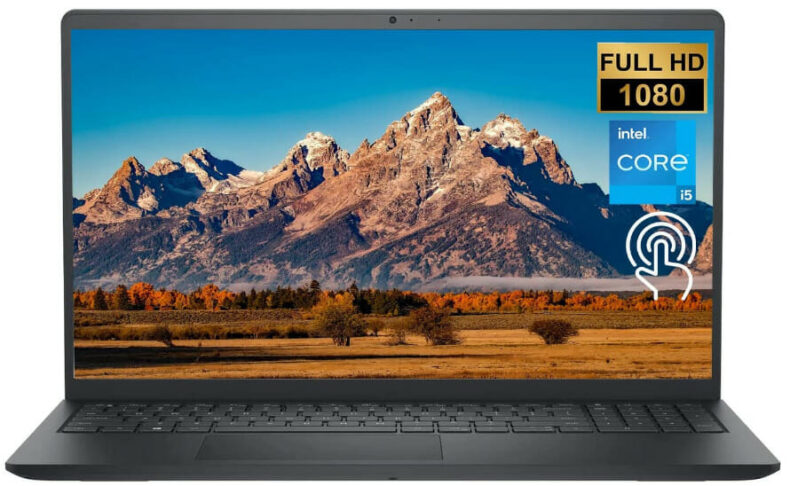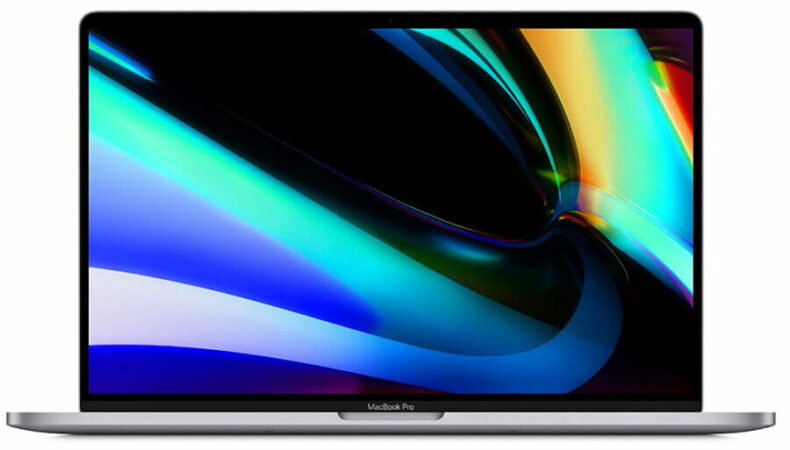Best laptop for data science in 2023 | Top 7 Models

Best laptop for data science
Data science is one of the fastest-growing fields in the world. As a result, the demand for people who can master the field is increasing rapidly. If you want to make a career change and become a data scientist, you may wonder what the best laptop for data science is. Data science is an emerging field changing how we work and live.
Data science is a field that has been gaining popularity in recent years. The goal of data scientists is to collect large amounts of data and then use it to solve problems. Data scientists work on many problems in the healthcare industry, but many other industries benefit from data science. For those looking for the best laptop for Data Science in 2023, this article will provide you with a list of the top 7 Best laptops for data science.
1. Acer Aspire 5 Slim Laptop
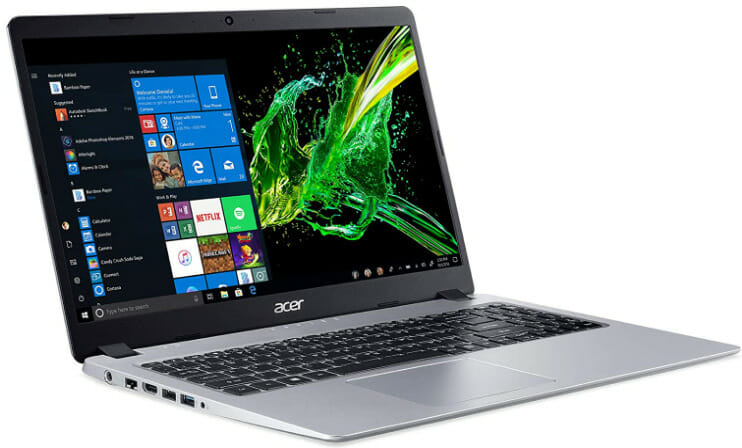
| Brand | Acer |
| Colour | Aspire 5 |
| Screen Size | 15.6 Inches |
| Color | Silver |
| Hard Disk Size | 128 GB |
| CPU Model | Ryzen 3 3200U |
| Ram Memory Installed Size | 4 GB |
| Operation System (OS) | Windows 10 Home |
| Graphics Card Description | Integrated |
- Aspect Ratio:16:9
- AMD Ryzen 3 3200U Dual Core Processor (Up to 3.5GHz); 4GB DDR4 Memory; 128GB PCIe NVMe SSD
- 15.6 inches full HD (1920 x 1080) widescreen LED-backlit IPS display; AMD Radeon Vega 3 Mobile Graphics
- 1 USB 3.1 Gen 1 port, 2 USB 2.0 ports & 1 HDMI port with HDCP support
- 802.11ac Wi-Fi; Backlit Keyboard; Up to 7.5 hours of battery life
- Windows 10 in S mode. Maximum power supply wattage: 65 Watts
Pros
- Affordable price point
- Good performance
- Lightweight and portable design
- A variety of configuration options
Cons
- Display quality
- Build quality

The Acer Aspire 5 has a gorgeous screen perfect for those who need to do data science or coding work. With an Intel Core i3-7100U processor and 8GB of RAM, it’s powerful for even the heaviest-duty tasks.
This is a good choice for anyone who loves to code or watch videos online. It can play the most recent games at high settings, thanks to the AMD Radeon Vega 3 graphics.
On the other hand, the Aspire 5 isn’t the most powerful laptop you can buy. While it comes with an integrated graphics card, it doesn’t have the power to run more demanding programs. So if you plan on using it for more than web browsing and streaming, you may need to upgrade the processor and graphics card.
However, if you’re looking for a lightweight laptop for daily tasks, this is for you. It’s not the lightest, it is still fairly compact, but it’s an ideal pick for the best laptop for data science.
2. Lenovo Chromebook C330 2-in-1 Convertible Laptop

| Brand | Lenovo |
| Color | Chromebook C330 |
| Screen Size | 11.6 Inches |
| Color | Blizzard White |
| Hard Disk Size | 64 GB |
| CPU Model | Mediatek Mt8173C |
| Ram Memory Installed Size | 4 GB |
| Operation System (OS) | Chrome OS |
| Graphics Card Description | Integrated |
- Aspect Ratio:16:9
- Get high performance when needed – The Chromebook C330 boots up in seconds and features easy-to-use Chrome OS, plenty of memory and storage, and much more.
- Sleek, stylish, and secure, this 360⁰ convertible laptop is less than 1-inch thin and about the weight of a hardback book, with an 11-inch touchscreen display perfect for day-to-day computing and multimedia, on or offline.
- The Lenovo Chromebook C330 is easy to use, offers built-in virus protection and keeps going with long battery life. No setup needed – Log in with a Google account so emails, maps, documents, and photos stay with you via cloud storage.
- Built to connect, this notebook computer includes a variety of USB ports for effortless connectivity. Plus, stay in touch with the built-in camera. Bluetooth 4.2
- Users love it; “High-end features for a low price,” says one happy reviewer. Another adds, “This Chromebook has far exceeded my expectations. The speed is snappy, and the device responds quickly to gestures and commands.”
Pros
- Chrome OS is a lightweight
- 2-in-1 design
- Affordable price
- Long battery life.
- Solid build quality.
Cons
- Limited storage
- Performance may not be sufficient.

The Lenovo Chromebook C330 is a powerful 2-in-1 convertible laptop with the latest Intel Celeron processor. Its slim and sleek design is ideal for business travelers and coders who want a laptop that can work on the go. It has an 11-inch touchscreen display, a 720p webcam, and an HDMI port, so you can watch movies and videos or share images with other devices.
Chromebooks are easy to use, and this model has built-in virus protection and keeps going with long battery life. You can keep it connected using a range of USB ports and a microSD card slot.
If you’re looking for a versatile and powerful 2-in-1 convertible laptop, check out the Lenovo Chromebook C330. This is a high-performance notebook with a beautiful design and impressive battery life, making it a great choice for those needing best laptop for data science in 2023.
3. Acer Aspire 5 A515-56-32DK Slim Laptop

| Brand | Acer |
| Colour | A515-56-32DK |
| Screen Size | 15.6 Inches |
| Colour | Silver |
| Hard Disk Size | 128 GB |
| CPU Model | Core i3 |
| Ram Memory Installed Size | 4 GB |
| Operation System (OS) | Windows 11 Home |
| Graphics Card Description | Integrated |
- Powerful Productivity: 11th Generation Intel Core i3-1115G4 Dual Core processor delivers unmatched speed and intelligence, enabling impressive creating, productivity, and gaming experiences. With Turbo Boost Technology, get up to 4.1GHz for your high-demand applications. Connectivity Technology: Wi-Fi, Bluetooth, HDMI
- Visibly Stunning: Experience sharp details and crisp colors on the 15.6″ Full HD IPS display with 82.58% screen-to-body, 16:9 aspect ratio, and narrow bezels
- Ergonomic Typing: Ergonomically-designed hinge lifts the keyboard for comfortable typing, improved cooling, and a better sound experience
- Internal Specifications: 4GB DDR4 on-board memory (1 slot available); 128GB NVMe solid-state drive storage (1 hard drive bay available) to store your files and media
- Acer’s Purified. Voice technology features enhanced digital signal processing to cancel out background noise and improve speech accuracy and far-field pickup, making calls clearer and easier talking to Alexa.
- Using Alexa on your PC is as easy as asking a question. Just ask, and Alexa can check your calendar, create lists, play music, answer questions, read the news and more.
Pros
- Slim and lightweight design:
- Powerful performance:
- Good battery life:
- 1080p display:
Cons
- Limited storage:
- No dedicated graphics:

This is my second time purchasing a laptop for data science. This time, I went for the Acer Aspire A515-56-32DK. I’m glad that I’ve chosen this particular model. It’s got everything that I need in a data scientist’s laptop.
It’s not just the processor that impressed me, it’s the build quality and the battery life. The laptop is lightweight and has a sleek design. It’s the first laptop that I have purchased, and it’s not just black. Instead, it has a silver color with a matte finish. It’s a perfect combination for a data scientist.
It has a powerful and reliable Intel Core i3 processor that can handle any task you throw at it. The processor itself has a clock speed of 2.5GHz. It has 4GB RAM memory, which is enough for any project you want to work on. Also, it has a 64GB SSD, which can store all your files and other important information.
The graphics coprocessor is also an impressive piece of technology. It comes with an Nvidia GeForce 940MX. This powerful GPU with 8GB of VRAM will ensure that the most demanding applications run smoothly on the screen.
It’s a versatile laptop with an HD screen and a great choice for watching movies or playing games. It also features Acer TrueHarmony for a better sound experience.
The keyboard is also a good piece of technology. It’s comfortable to type on, and the keys are arranged to make navigating the web and running essential applications easier. So, this is the best laptop for data science in 2023.
4. HP 2022 Newest 14″ HD Laptop

| Brand | Hp |
| Color | Aspire 5 |
| Screen Size | 14 Inches |
| Colour | Blue |
| Hard Disk Size | 64 GB |
| CPU Model | AMD A Series |
| Ram Memory Installed Size | 8 GB |
| Operation System (OS) | Windows 10 |
| Graphics Card Description | Integrated |
【14″ HD Display】14″ HD(1366 x 768) Display with micro-edge bezel design, WLED-backlit, BrightView, Enjoy your entertainment with the great quality and high-definition detail of 1 million pixels
【AMD 3000 Series Mobile Processors】AMD 3020e, 2 Cores & 4 Thrades, 1.2GHz Base Clock, 2.6GHz Max Boost Clock, 4MB L3 Cache, 6W TDP, Built-in 3 Cores Radeon Graphics, Experience high performance for all your entertainment
【Upgraded to 8GB RAM】Substantial high-bandwidth RAM to smoothly run your games and photo- and video-editing applications, as well as multiple programs and browser tabs all at once
- 【Upgraded to 64GB emmc + 128GB SSD】Speedy solid-state drive for seamless performance and reliable multitasking, allows you to store a large number of files, improving the reading speed of large files, ensuring daily use and the speed of opening large files, reducing the time of application and file loading
【Activate 1 Year MS office 365 & Win10 in S mode】(About switch to regular Win10, see the detail in Product description) Activate pre-installed Office: 1.Launch any Office app > 2.Start your activation by signing in with your Microsoft account(Create an account if you don’t have one yet) > 3. Click “Activate Office” > 4. Sign in to your account and follow the next prompts. > 5.Complete Steps 1,2 and 3 > 6. Click on Refresh once Office is ready > 7. Open a document and accept the license agreement.
Pros
- Stylish, lightweight, and thin design
- Enjoying it feels similar to having a tablet
- Superb screen for entertainment purposes
- Fits well in your bag or backpack
- Enjoyable to use
Cons
- Screen glare on some surfaces
- Screen is not anti-glare

As a data scientist, I need a computer that can handle all the heavy lifting and let me do my job. I’ve owned three laptops over the last seven years, the last two were awful. They weren’t powerful enough and couldn’t keep up with all the data science tools I had to run.
This new HP laptop is everything I could want in a computer for data science. Not only does it handle all the heavy lifting, but it also has the horsepower to keep up with all the heavy data science tools I need.
When I first tested the laptop, I ran a series of benchmarks, and it outperformed every other laptop I had ever used. Not only that, but it lasted all day on a single charge, and even when I charged it in the evening, I didn’t have to worry about battery life.
The most important part of the HP laptop is its performance, but it also has a beautiful, bright display with a high resolution. The 14″ screen is ideal for my needs and is great for watching movies or playing games.
If you’re looking for a powerful, reliable, best laptop for data science, I highly recommend the HP 2022. It has the needed performance, a great screen, and a great keyboard you won’t want to live without.
5. HP’s Newest Laptop

| Brand | Hp |
| Color | laptop |
| Screen Size | 15.6 Inches |
| Color | Blue |
| Hard Disk Size | 512 GB |
| CPU Model | AMD R Series |
| Ram Memory Installed Size | 8 GB |
| Operation System (OS) | Windows 11 |
| Graphics Card Description | Integrated |
- 15.6” FHD Anti-glare micro-edge Display: The 1920 x 1080 resolution boasts impressive color and clarity. The thin and lightweight laptop packs a 6.5 mm micro-edge bezel display to showcase your media in high definition.
- AMD Ryzen 5 5500U Mobile Processor: Create. Play. Work. Educate. Entertain. The possibilities are infinite. Be anywhere, go anywhere. Powers ultrathin notebooks that offer supreme performance, astonishing battery life, and modern features you need on the go.
- Upgraded to 16GB system memory for advanced multitasking: Substantial high-bandwidth RAM to smoothly run your games, photo and video-editing applications, and multiple programs and browser tabs simultaneously.
- Upgraded to 512GB SSD Storage: Boot up in seconds, get to files faster, and have room for loads of files with the lightning-quick solid-state drive.
- AMD Radeon graphics: Get world-class performance with AMD Radeon graphics, designed to deliver breathtakingly lifelike visuals, new levels of immersion, and must-have features for the ultimate entertainment experience.
- System ram type: ddr4 sdram
- Wattage: 45.0 watts
- 802.11 ABGNAC
Pros
- Beautiful silver-coloured finish
- Super sleek look
- Superb performance
- Powerful Intel i7-1165G7 processor
- Plenty of memory
Cons
- Not designed for gamers
- Not very ergonomic

This HP laptop has a beautiful silver-colored finish and a super sleek look. The color is one of its most impressive features. It’s not just shiny; it has a kind of metallic sheen that makes it unique.
This HP laptop is made for those doing a lot of data work. This is the perfect device for data analysts, scientists, and students. The Intel Core i7-1165G7 processor has four physical cores with 4 threads. This means the processor can run four different programs simultaneously without a bottleneck.
A 1TB SSD hard drive powers the computer, with Windows 11 Home preinstalled. That means you get all the necessary tools right out of the box. This HP laptop is also loaded with 8GB of RAM, which is enough for most people. The memory can be expanded by up to 32GB.
The graphics card on this HP laptop is the integrated Intel HD 620. It’s a powerful chip that will let you do some pretty impressive things. It has 8GB of VRAM, which is enough for most games. If you need more, you can upgrade the graphics card to a dedicated NVIDIA GeForce GTX 1050, also included in the package.
This is a great HP laptop if you need to crunch through a lot of data. With its Intel processor, powerful graphics card, and plenty of memory, you can use it for years to come, and all these features make this machine one of the best laptop for data science.
6. HP 2022 Newest Pavilion 15.6″ FHD 1080P IPS Laptop

| Brand | Hp |
| Color | HP Pavilion |
| Screen Size | 15.6 Inches |
| Color | Horizon Blue |
| Hard Disk Size | 512 GB |
| CPU Model | AMD Ryzen 7 5700U |
| Ram Memory Installed Size | 16 GB |
| Operation System (OS) | Windows 11 |
| Graphics Card Description | AMD Radeon Graphics |
- 【15.6″ FHD IPS micro-edge Display】Ultra-wide 178-degree viewing angles with consistent detail and a vibrant 1920 x 1080 resolution, you’ll always have a great view of your favorite content.
- 【AMD Ryzen 7 5700U】Push the limit for desktop computing with AMD Ryzen 7 processors. Their bold new architecture delivers intuitive cooling and multi-core processing for gaming, streaming, creativity, VR, and more.
- 【Upgraded to 8GB DDR4 RAM】Get the mighty performance out of your laptop with the support of the latest DDR4-3200 memory. Enjoy the faster system speed and responsiveness; the new standard will take your gaming experience to the next level.
- 【Upgraded storage to 512GB PCIe SSD】Provides massive storage space for huge files so that you can easily store important digital data and work your way through it. It gives you enormous space to save all of your files.
- 【Fast charge & Accessorise】Go from 0 to 50% charge in approximately 45 minutes. Ghost Manta Accessories Include 1x HDMI Cable, 1x USB extension cord, and 1x Mouse Pad.
Pros
- Large 15.6-inch display:
- Fast processor:
- A solid-state drive (SSD):
- Good connectivity:
Cons
- Limited graphics performance:

This is an amazing laptop for data science. You get a great 15.6” screen and a high-performance processor, great RAM, and a 1TB solid-state drive, all for a very affordable price.
The keyboard is also excellent. The keys have good size, and they respond well when pressed. The touchpad has a lot of features too. A wide variety of ports and slots are also available for different needs, including an SD card slot.
It’s not as sleek as other laptops, but it’s good enough for most people. The display is clear and bright and has vivid colors. The brightness can be adjusted, so you’ll find a comfortable setting.
It’s also compatible with Windows 10, so you can use all the features available for that OS. This laptop is great for people who need a reliable, powerful computer but don’t want to spend much. This machine is a good option if you’re looking for the best laptop for data science and analysis.
7. 2022 Newest Acer Aspire 5 Slim 15.6″ FHD IPS Laptop
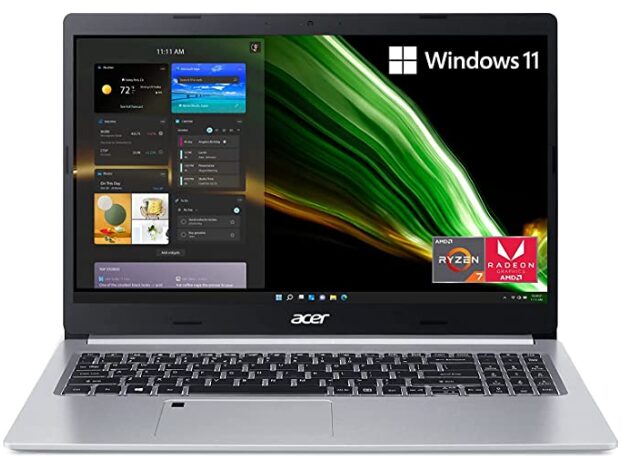
| Brand | Acer |
| Colour | Acer Aspire 5 Slim Laptop |
| Screen Size | 15.6 Inches |
| Color | Silver |
| Hard Disk Size | 512 GB |
| CPU Model | Ryzen 7 3700U |
| Ram Memory Installed Size | 8 GB |
| Operation System (OS) | Windows 11 Home |
| Graphics Card Description | Integrated |
- 【Statement】Original Seal is opened for upgrade ONLY. If the computer has modifications, then the manufacturer box is opened for it to be tested and inspected and to install the upgrades to achieve the specifications as advertised
- 【Processor】 AMD Ryzen 7 3700U processor ( Quad-Core Mobile, 2.3GHz with Precision Boost up to 4.0GHz, Up to 4MB L3 Cache ) delivers unmatched speed and intelligence, enabling impressive creating, productivity, and gaming experiences.
- 【Upgraded】Substantial high-bandwidth up to 24GB RAM smoothly run your games, photo and video-editing applications, and multiple programs and browser tabs. Up to 1TB, PCIe NVMe SSD Storage boots up in seconds, get to files faster and have room for loads of files with the lightning-quick solid-state drive.
- 【Backlit Keyboard】 Ergonomically-designed hinge lifts the keyboard for comfortable typing, Backlit Keyboard, improved cooling, and a better sound experience.
- 【Operating System】 Windows 11 Home mode comes with advanced security features built right in, which can protect your rights and interests when you are online. Experience.
Pros
- 15.6″ Full HD IPS display:
- Slim design:
- Good performance:
- Solid build quality:
Cons
- No dedicated graphics card:
- The display may not be the highest quality:

The Acer Aspire 5 Slim 15.6″ is a solid entry-level laptop with a competitive price. Its design is sleek and minimalistic, with a light grey matte finish.
Acer has given it a decent set of ports, with one full-size USB 3.2 type-C port, two USB 3.2 ports (one with a power-off charging function), a USB 2.0 port, a mini DisplayPort 1.2, an HDMI 2.0 port, and a microSD card slot.
It also has a backlit keyboard, nice key travel, and a comfortable layout. The only downside is that it has only a 1080p display, which is not ideal for productivity work. But for watching movies or browsing the web, or coding. For the price, you can’t go wrong with this, it is an ideal pick for the best laptop for data science.
Conclusion!
In conclusion, if you’re looking to start your career in data science, you should consider a laptop with plenty of memory and storage space. The number of applications you’ll use to analyze data varies depending on the data type you work with. Data scientists use R and Python, so your laptop must have a dual-core processor.
If you prefer to use the command line, you’ll need a powerful processor because you’ll need to run several applications simultaneously. Your computer must also have a strong graphics card to display your graphs and charts.
FAQ Best Laptop for Data Science in 2023
What are the key features to look for in a laptop for data analysis and machine learning tasks?
When engaging in data analysis and machine learning, it’s crucial to have a laptop with at least an Intel Core i7 processor or its equivalent, a minimum of 16GB RAM (though 32GB is recommended for handling large datasets efficiently), and a solid-state drive (SSD) for faster data transfer and processing. A dedicated GPU, such as NVIDIA GeForce RTX series, is also beneficial for deep learning tasks.
Can a gaming laptop be a good option for data science professionals?
Absolutely, a high-end gaming laptop can be an excellent choice for data science tasks. These laptops typically come with powerful processors, high RAM capacity, superior graphics capabilities, and fast SSDs — all essential for the complex computations and data visualizations typical of data science.
How does the Dell XPS series fare as a choice for data scientists and machine learning enthusiasts?
The Dell XPS series is renowned for its powerful performance, making it an ideal choice for data science and machine learning tasks. With its high-end configurations, including up to Intel Core i9 processors, extensive RAM, and high-speed SSDs, it’s capable of handling complex computations required in machine learning algorithms and big data processing.
Is it necessary to buy a laptop with a dedicated GPU for data science and data analysis tasks?
While not all data science tasks require a GPU, those involving deep learning and certain types of data visualization can benefit significantly from a dedicated GPU. NVIDIA’s GeForce RTX series, known for its excellent performance in these areas, can dramatically speed up the training of machine learning models.
What makes a laptop suitable for handling large datasets commonly used in data science applications?
A laptop intended for managing large datasets should have a powerful multi-core processor, high-capacity RAM (16GB or more), and ample storage, preferably an SSD for faster read/write speeds. A robust cooling system is also advisable since data processing can tax a laptop’s hardware.
What specifications should data science students consider when choosing the best laptop for their needs?
Data science students should look for a laptop with at least an Intel Core i7 processor, 16GB of RAM, and a minimum of 512GB SSD. Additionally, a dedicated GPU is recommended for students interested in specializing in machine learning or deep learning.
Why is it recommended to choose a laptop with at least 16GB of RAM for data science and analysis tasks?
16GB of RAM is often recommended for data science because it allows for the efficient handling of large datasets and multitasking between various data-intensive applications without lag, thereby streamlining the data analysis process.
How important is the choice of the operating system in data science and machine learning tasks?
The choice of the operating system can significantly impact the tools and software you’re able to use. Many data science tools are developed for Linux, and it’s often used in professional data centers. However, Windows and macOS are also viable options, with a wide range of compatible data science software.
Is a thin and light gaming laptop capable of handling data science and machine learning algorithms?
Yes, several thin and light gaming laptops are equipped with powerful processors, sufficient RAM, and dedicated graphics cards, making them capable of handling demanding tasks associated with data science and machine learning while offering the advantage of portability.
Why is a laptop with a strong CPU essential for data science and machine learning tasks?
A strong CPU ensures that the laptop can process data quickly and perform complex calculations required by machine learning algorithms efficiently. This is especially important when working with big data or running resource-intensive tasks, which can be very demanding on the processor.
What makes a laptop ideal for handling large data sets for data science projects?
A laptop ideal for large data sets needs to have a powerful processor (like Intel’s i7 or i9, or AMD’s Ryzen 7 or 9), at least 16GB of RAM for smooth data processing, a fast SSD with ample storage to quickly read and write large files, and a robust cooling system to maintain performance during intensive tasks.
How do the specifications differ between a standard laptop and one tailored for data science needs?
A data science laptop typically requires more robust specifications, including a stronger processor, more RAM (preferably 16GB or more), ample and fast storage (like an SSD), and often a dedicated GPU for tasks involving data visualization or machine learning, which wouldn’t be as crucial in standard laptops used primarily for everyday tasks.
Why is having a laptop with a dedicated GPU like NVIDIA GeForce RTX important for certain data science tasks?
A dedicated GPU, especially a powerful one like NVIDIA GeForce RTX, accelerates tasks in data science that are parallel in nature, such as machine learning, deep learning, and certain big data operations, by offloading computations from the CPU to the GPU, allowing for much quicker data processing and analysis.
What are the key features to look for when choosing the perfect laptop for data science and machine learning?
Key features include a powerful multi-core processor, a minimum of 16GB RAM, ample fast storage (SSD), a dedicated and powerful GPU for machine learning tasks, a high-quality display for data visualization, and a durable build with efficient cooling to handle prolonged computational tasks.
Why is it important to consider the laptop’s cooling system when running data-intensive tasks for long periods?
Data-intensive tasks can cause the laptop’s components to generate excess heat, and without an effective cooling system, the laptop may experience thermal throttling, where the system slows down the processing speed to prevent overheating, ultimately affecting performance and potentially damaging the components.
How can a student involved in learning data science determine the right laptop for their needs?
Students should assess the software and applications they plan to use and choose a laptop that meets the recommended specifications for those programs. Essential features usually include a recent multi-core processor, at least 16GB of RAM, SSD storage, and a dedicated GPU if they plan to delve into machine learning.
What constitutes a “good choice” for a laptop in data science, and why?
A good choice would be a laptop that balances performance, portability, and price. It should have a strong processor, sufficient RAM, and storage, a dedicated GPU for advanced computations, a reliable battery life for work on the go, and a build quality that is durable for long-term use.
What makes a laptop “suitable” for data science, especially for professionals in the field?
Suitability involves meeting the demands of data science tasks, which includes having a powerful processor for complex calculations, sufficient memory to handle large datasets, a fast storage solution to speed up data retrieval and saving, and a high-resolution screen for clear data visualization, along with reliable build quality for sustained use.
What are the reasons a data science professional might opt for a top-tier laptop model?
Top-tier laptops offer superior processing power, larger and faster storage options, higher amounts of RAM, and high-quality displays, all of which contribute to more efficient data analysis, better performance with complex machine learning algorithms, and smoother multitasking with data-heavy applications.
Why might data science professionals need a laptop that’s considered a “great choice” instead of a standard one?
A “great choice” laptop for data science professionals would offer enhanced performance capabilities, including faster processors for handling complex algorithms, higher RAM capacity for larger data sets, quality graphics for detailed data visualization, and robust build quality to withstand the demands of frequent, high-intensity usage. These features ensure efficiency and reliability during critical data analysis tasks, which a standard laptop might not be able to handle effectively.
What criteria should be considered when compiling a list of the “10 best laptops for data science”?
Compiling a list of the top 10 laptops for data science requires considering several key specifications: processing power (high-end CPUs), RAM (16GB or more), storage (fast SSDs with substantial capacity), dedicated graphics cards (for machine learning tasks), battery life, display quality (for data visualization), and overall build and reliability, balancing these against price points and user reviews.
How does the presence of an NVIDIA GeForce RTX graphics card influence a data scientist’s laptop choice?
An NVIDIA GeForce RTX graphics card significantly enhances a laptop’s ability to handle machine learning and deep learning tasks, which rely on parallel processing that GPUs are specifically designed to execute. It also supports better data visualization and modeling tasks, making the laptop much more versatile for complex data computations.
Why would a data science professional need a laptop with “power for data science,” and what specifications typically fulfill this requirement?
“Power for data science” refers to the laptop’s ability to handle large datasets, run complex algorithms, and perform extensive calculations without lagging. Specifications that fulfill this need include a powerful multi-core processor (like Intel i7 or i9 series), substantial RAM (16GB or more), fast and spacious storage (preferably SSD), a dedicated graphics card for computational tasks, and a robust cooling system for sustained performance.
When discussing “laptop requirements for data science,” what constitutes a “good choice,” and why?
A “good choice” in laptops for data science will have a potent combination of fast multi-core processors for heavy computations, high RAM capacity for handling large datasets smoothly, SSD storage for quicker data access and processing, dedicated graphics for visualization and GPU-accelerated tasks, and a high-resolution display for detailed visuals. These features, combined with a strong battery life and durable build, ensure the laptop can handle the demands of data science efficiently.
In the context of data science, why is it critical to “choose the right laptop,” and what impact could a suboptimal choice have on one’s work?
Choosing the right laptop is crucial because data science involves processing large amounts of data and running complex algorithms that can be resource-intensive. A suboptimal choice may lead to slower data processing, inability to run certain applications, and reduced efficiency, potentially impacting the accuracy of results and the ability to meet project deadlines. Additionally, it could lead to faster hardware degradation due to overloading underpowered components.
